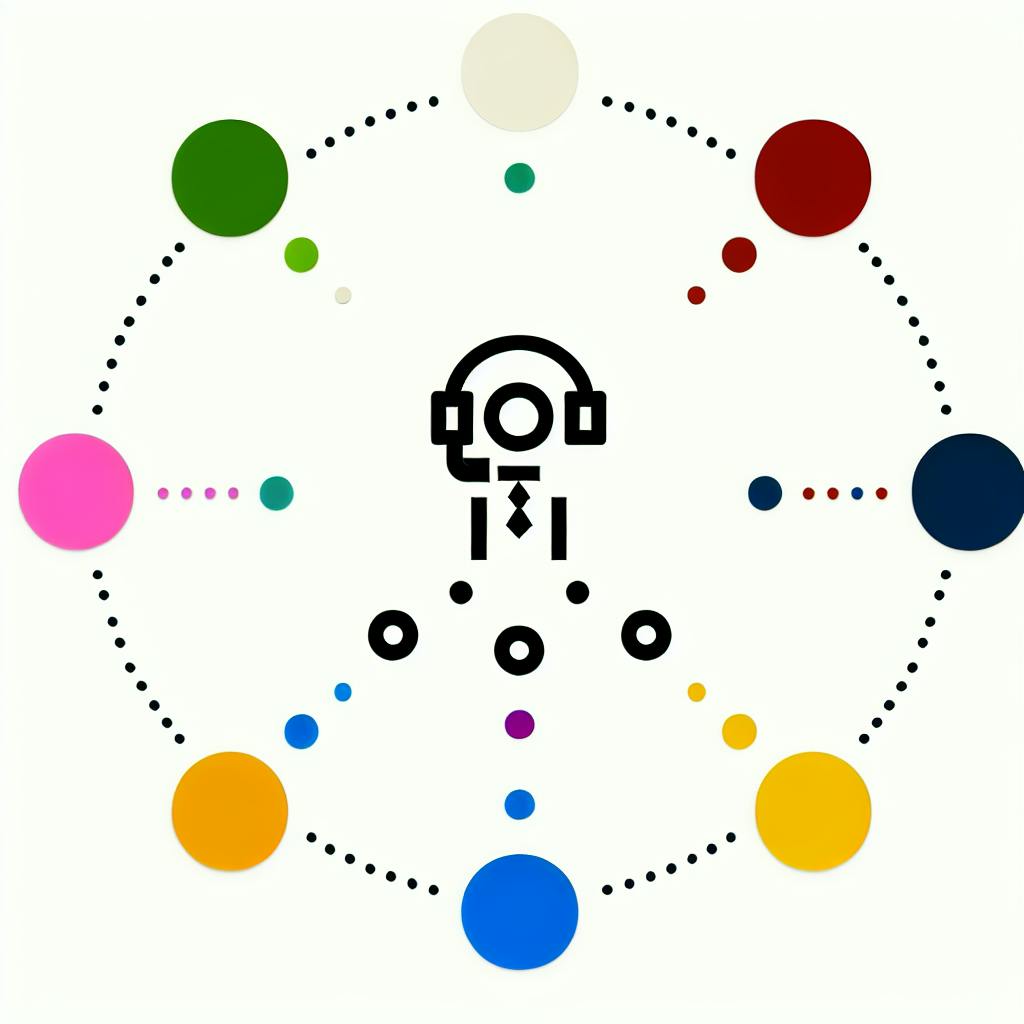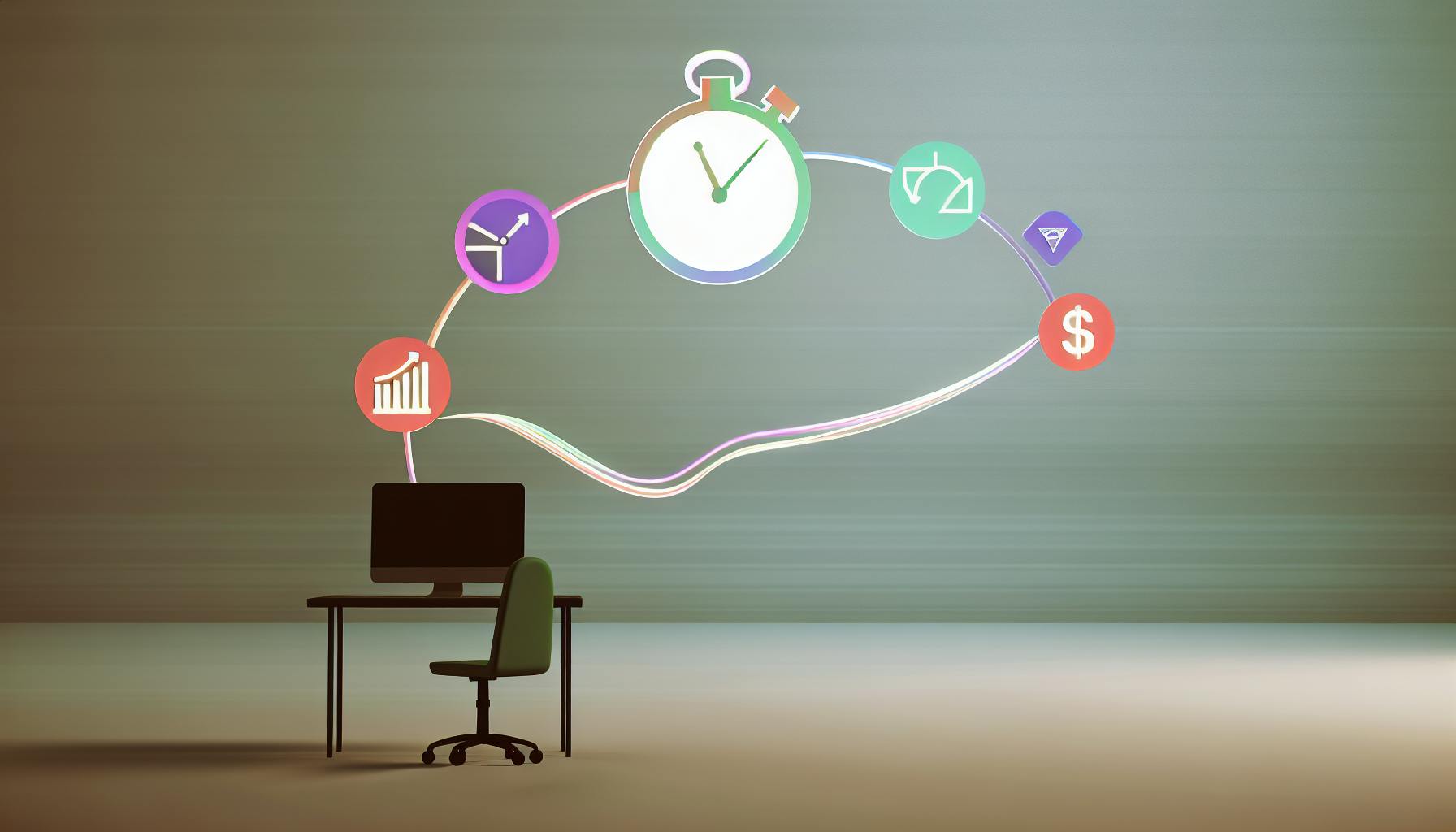Want to measure your chatbot's ROI? Start by tracking these 12 key metrics that reveal performance, efficiency, and customer satisfaction. Here's a quick summary:
- Customer Satisfaction (CSAT): Measures how happy users are with chatbot interactions.
- Net Promoter Score (NPS): Tracks how likely users are to recommend your chatbot.
- Customer Effort Score (CES): Evaluates how easy it is for users to resolve issues.
- Total Conversations: Shows how often users interact with your chatbot.
- Chat Duration: Measures how long conversations last - short but effective is ideal.
- Chat Exit Rate: Tracks how often users leave chats before resolving their issues.
- Response Time: Measures how quickly the chatbot replies.
- Resolution Time: Tracks the time taken to fully resolve issues.
- Self-Service Rate: Shows the percentage of issues resolved without human help.
- Sales Success Rate: Measures how well the chatbot converts chats into sales.
- Sales Amount: Tracks revenue generated through chatbot interactions.
- Cost Per Chat: Calculates the cost of each chatbot interaction.
Why track these? Monitoring these metrics helps you improve performance, reduce costs, and boost customer satisfaction. For example, a high self-service rate cuts costs, while a good NPS indicates strong customer loyalty.
Quick Tip: Use tools to automate tracking and analyze trends over time. Focus on improving areas like response accuracy, resolution speed, and user experience to maximize ROI.
Chatbot Performance Testing : Lets Understand the Basics ...
1. Customer Satisfaction (CSAT)
Customer Satisfaction (CSAT) measures how well your chatbot meets user expectations. It's a way to gauge the quality of interactions and pinpoint areas that need improvement. You can quantify CSAT with a simple survey.
How to Calculate CSAT:
- Conduct post-chat surveys asking users to rate the interaction on a 1-5 scale.
- Focus on the percentage of customers who rate their experience as 4 or 5.
- Use this formula: CSAT = (Number of satisfied customers ÷ Total number of respondents) × 100
What to Track:
- Overall satisfaction with the experience.
- How accurate the chatbot's responses are.
- Ease of communication during the interaction.
- Success in resolving user issues.
Tips for Measuring CSAT Effectively:
- Keep surveys short and to the point.
- Ask for feedback right after the interaction ends.
- Add an optional comment box for users to share more details.
- Track trends over time to spot recurring issues or improvements.
Ways to Improve CSAT:
- Regularly update your chatbot's knowledge base to ensure accurate responses.
- Adjust conversation flows based on user feedback.
- Use sentiment analysis to catch signs of dissatisfaction early.
- Transfer users to a human agent when the chatbot can't resolve an issue.
2. Net Promoter Score (NPS)
Net Promoter Score (NPS) is a way to gauge customer loyalty and satisfaction by asking users how likely they are to recommend your chatbot. It helps you understand customer relationships and how they might impact your business through referrals. While CSAT measures immediate satisfaction, NPS digs deeper into loyalty and referral potential.
How to Calculate NPS:
After a chatbot interaction, ask users: "On a scale of 0-10, how likely are you to recommend our chatbot service to others?"
Based on their answers, group them into:
- Promoters (9-10)
- Passives (7-8)
- Detractors (0-6)
Use this formula to calculate NPS: NPS = % of Promoters - % of Detractors
Key Metrics to Watch:
-
Response Breakdown
Track the percentages of promoters, passives, and detractors. Look for seasonal trends or patterns in scores. -
Follow-Up Feedback
- Ask promoters what they enjoy most about your chatbot.
- Get detractors to share specific issues or frustrations.
- Identify recurring themes to guide improvements.
Tips for Using NPS Effectively:
- Send surveys at key moments during the customer journey.
- Be consistent with survey timing.
- Reach out to detractors within 24 hours for follow-up.
- Measure NPS separately for different chatbot functions (like sales, support, or inquiries).
How to Boost Your NPS:
- Improve chatbot accuracy by refining its training.
- Add personalization based on user history.
- Ensure smooth transitions to human agents when needed.
- Focus on fixing common complaints from detractor feedback.
- Offer proactive support based on user behavior.
When to Measure NPS:
Track NPS in two ways:
- Transactional: Right after an interaction to assess immediate satisfaction.
- Relationship-Based: Quarterly, to understand long-term loyalty.
Compare these results to see if there’s a gap between one-off experiences and overall brand perception.
For deeper insights, segment your NPS data by:
- User demographics
- Interaction type
- Time of day
- Chat duration
- Complexity of the issue
3. Customer Effort Score (CES)
Customer Effort Score (CES) measures how much effort customers need to put into resolving their issues through chatbot interactions. Lower effort usually leads to happier customers and better retention rates.
How to Calculate CES:
CES uses a 7-point scale to assess ease of resolution:
- 1 = Strongly Disagree
- 7 = Strongly Agree
Formula:
CES = (Sum of scores) ÷ (Total responses)
What to Monitor:
- Resolution Path Length: Track the steps users go through and pinpoint areas where they tend to get stuck.
- Handoff Necessity: Record how often the chatbot transfers issues to a human agent, and identify the types of problems that require human help.
- User Input Clarity: Monitor how often users need to rephrase their questions or if the chatbot frequently misinterprets input.
These insights can help fine-tune your system and increase its efficiency.
Tips to Improve CES:
- Simplify Conversation Flows: Reduce the number of steps needed to complete common tasks. Provide direct access to frequently requested information.
- Upgrade Language Understanding: Regularly enhance your chatbot’s ability to interpret user intent and improve its responses.
- Leverage Smart Defaults: Use context and past interactions to pre-fill information whenever possible.
When to Measure CES:
- Right after resolving an issue
- After handling complex interactions
- Following chatbot-to-human handoffs
- During the rollout of new features
Best Practices:
- Keep surveys short and to the point.
- Measure CES consistently across all communication channels.
- Compare scores for different interaction types.
- Use the data to identify where additional training or updates are needed.
A strong CES score falls between 5.5 and 7.0 on the 7-point scale. If your score dips below 5.0, it’s time to focus on improvements.
4. Total Conversations
Total Conversations tracks how often users interact with a chatbot, offering insight into its usage and demand. It highlights engagement patterns, helping businesses allocate resources effectively and refine performance. This metric also plays a key role in assessing the return on investment (ROI).
5. Chat Duration
Chat Duration measures how long users spend interacting with your chatbot. The goal is to resolve issues effectively while keeping interactions efficient.
If chat durations are too long, it could mean the conversation flow is clunky, responses are unclear, or the paths are unnecessarily complicated. Keeping an eye on both the average and median chat durations can help balance out any extreme cases. Break down durations by query type, time period, and user group to identify problem areas and ensure resolution stays efficient.
It’s also helpful to compare chat duration with resolution rates. For example, a shorter chat duration paired with high resolution rates shows that queries are being handled efficiently. On the other hand, if short durations come with low satisfaction scores, it could mean responses are rushed or incomplete.
Set realistic time benchmarks based on the type of query:
| Query Type | Target Duration | Notes |
|---|---|---|
| Basic FAQs | 1-2 minutes | Quick answers to common questions |
| Technical Support | 5-8 minutes | More detailed troubleshooting |
| Sales Inquiries | 3-5 minutes | Balanced focus on conversions |
| Account Issues | 4-6 minutes | Ensures thorough problem-solving |
6. Chat Exit Rate
Chat Exit Rate measures how often users leave a chatbot conversation before it’s resolved. This percentage helps pinpoint where the chatbot interaction might be falling short and offers a way to evaluate performance.
To calculate it, divide the number of abandoned conversations by the total interactions, then multiply by 100. For instance, if 150 out of 1,000 conversations are abandoned, the exit rate would be 15%.
Tracking this metric sheds light on potential issues in the chatbot's flow, pairing well with data like response and resolution times for a clearer picture.
sbb-itb-d1a6c90
7. Response Time
Response time measures how quickly your chatbot replies to user questions. Fast replies keep conversations flowing, while delays can frustrate users and lead to drop-offs. Monitoring this metric helps you identify and address performance problems.
Set a baseline for response times and keep an eye on busy periods to identify any slowdowns and ensure smooth interactions.
Using AI tools to handle inquiries can help minimize delays and improve overall efficiency.
8. Resolution Time
Resolution time tracks how long it takes to fully resolve a customer's issue - not just respond to it. It covers the entire interaction, from the initial query to the final solution. Keeping an eye on resolution time helps improve both customer satisfaction and overall ROI.
Longer resolution times often point to challenges like complex issues, inefficient workflows, knowledge gaps, or unnecessary escalations.
Here’s how you can work on improving resolution times:
- Update Your Knowledge Base: Regularly add common questions and solutions to ensure accurate and quick answers.
- Analyze Conversation Flow: Review chats with longer resolution times to uncover:
- Bottlenecks in the process
- Misunderstood queries
- Areas where the chatbot fails to provide complete answers
- Set Resolution Benchmarks: Define clear targets by tracking average resolution times for:
- Different issue types (e.g., billing, tech support)
- Time periods (peak vs. off-peak hours)
- Customer groups (new vs. returning customers)
For simple questions, aim for a resolution time of 2-3 minutes. For more complicated issues, establish realistic goals based on your business needs and what your customers expect.
To stay on top of this metric, use tools that flag interactions taking longer than your targets. While speed is important, always prioritize delivering quality solutions.
9. Self-Service Rate
The self-service rate measures the percentage of inquiries that the chatbot resolves without human intervention. It's a key indicator of how well the chatbot performs on its own.
Formula:
Self-service rate = (Conversations resolved by chatbot ÷ Total conversations) × 100
For example, if the chatbot resolves 700 out of 1,000 conversations, the self-service rate is 70%. This metric helps you understand how effectively the chatbot handles tasks independently.
10. Sales Success Rate
Measuring how well your chatbot turns conversations into completed sales is a key metric for understanding its impact on revenue.
Formula:
Sales success rate = (Number of sales ÷ Total sales conversations) × 100
Example:
If your chatbot handles 500 sales conversations in a month and 75 result in purchases, the sales success rate is 15%.
To monitor this metric effectively:
- Define what counts as a sale: Clearly outline the criteria for a successful sale through your chatbot.
- Tag relevant conversations: Separate sales-focused interactions from general support chats.
- Track purchase behavior: Check if users finalize a purchase during or shortly after interacting with the chatbot.
Break down the sales success rate by factors like product categories, timeframes, or customer groups. This can highlight areas needing improvement. To boost results, refine product suggestions, simplify the buying process, use clear calls-to-action, and test different conversation approaches.
11. Sales Amount
Measuring sales amounts gives a clear picture of how chatbot interactions contribute to revenue. By tracking the total revenue generated through chatbot interactions, you can directly assess the financial impact of your chatbot.
Formula:
Total Sales Amount = Sum of all purchases made through chatbot interactions
To track this accurately, follow these steps:
- Tag sales that originate from chatbot interactions.
- Monitor revenue from:
- Purchases completed directly in chat.
- Sales initiated in chat but finalized later.
- Upsells and cross-sells recommended by the chatbot.
Tips for tracking sales amounts effectively:
- Use unique tracking codes for chatbot-driven purchases.
- Include both immediate sales and those attributed to chatbot interactions.
- Break down sales by product type, time period, and customer group.
- Compare average order values (AOV) for chatbot and non-chatbot sales.
Boosting chatbot-driven sales:
- Program the chatbot to recommend products based on customer inquiries.
- Clearly display pricing and payment options.
- Simplify the purchase process within the chat interface.
- Use smart triggers to present special offers at the right time.
Key Metrics to Watch:
- Average order value (AOV) from chatbot interactions.
- Revenue generated per chat session.
- Monthly or quarterly growth in chatbot-driven sales.
- Percentage of total company revenue from chatbot sales.
When analyzing sales data, consider seasonal trends and promotions to provide context for your findings. This helps in setting realistic performance goals and forecasting future revenue.
Regularly review sales data - monthly for most businesses, or weekly for operations with high sales volumes.
12. Cost Per Chat
Cost per chat helps you figure out how much you're spending, on average, for each conversation your chatbot handles. To calculate it, divide the total costs of your chatbot - like setup, subscription fees, and maintenance - by the number of conversations it processes. This gives you a clear view of your per-interaction costs and helps you manage resources more effectively.
This metric is a key way to evaluate your chatbot's performance and return on investment (ROI).
Conclusion
Tracking the return on investment (ROI) of chatbots requires careful attention to the right metrics. By focusing on the twelve key indicators - such as customer satisfaction scores and cost per chat - businesses can make informed decisions to improve their chatbot strategies.
Here’s how to get started:
- Set a baseline to measure future performance against.
- Define clear goals that align with your business needs.
- Choose the right tools to track and analyze data effectively.
- Review performance regularly, ideally on a monthly basis.
The real challenge is balancing efficiency with customer satisfaction. Metrics like response time and resolution rate are important but should always work alongside customer-focused measures like CSAT and NPS scores.
To simplify tracking and cost management, tools like BizBot offer integrated solutions that help businesses optimize both operations and expenses.


